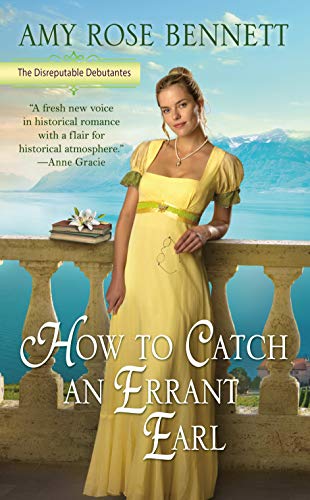There is Always a Tomorrow
(The Graham Saga, Book #9)
By Anna Belfrage
It is 1692 and the Colony of Maryland is still adapting to the consequences of Coode’s Rebellion some years previously. Religious tolerance in the colony is now a thing of the past, but safe in their home, Alex and Matthew Graham have no reason to suspect they will become embroiled in the ongoing religious conflicts—until one of their sons betrays their friend Carlos Muñoz to the authorities.
Matthew Graham does not leave his friends to rot—not even if they’re papist priests—so soon enough most of the Graham family is involved in a rescue attempt, desperate to save Carlos from a sentence that may well kill him.
Matthew Graham does not leave his friends to rot—not even if they’re papist priests—so soon enough most of the Graham family is involved in a rescue attempt, desperate to save Carlos from a sentence that may well kill him.
Meanwhile, in London little Rachel is going through hell. In a matter of months she loses everything, even her surname, as apparently her father is not Master Cooke but one Jacob Graham. Not that her paternity matters when her entire life implodes.
Will Alex and Matthew be able to help their unknown grandchild? More importantly, will Rachel want their help?
“I did as I had to do,” Daniel said, straightening up to his full, rather impressive, height. The only one of their sons who overtopped his father by an inch or so, Daniel Graham was a good-looking man, bright blue eyes contrasting with his dark hair.
“I guess that’s what Pilate said as well,” Alex retorted.
Matthew Graham had sent his son away to learn to be a man of God, but he would never have thought that the same son would be instrumental in another man’s suffering — a friend’s suffering.
Like Jesus, Carlos Muñoz prayed for a merciful death, but with a corrupt magistrate proceeding over the trial, Carlos fears for the worst. The only way he can survive such torment is if his friends take the law into their own hands…
From a desperate rescue to save a man’s life to the longed-for homecoming of a prodigal son, There is Always a Tomorrow (The Graham Saga, Book #9) by Anna Belfrage is the dramatic conclusion of a story of one woman who fell through time and found herself in the 17th Century.
I have been enchanted with The Graham Saga from the opening chapter of A Rip in the Veil (The Graham Saga, Book #1) to the end of that very final full stop in There is Always a Tomorrow (The Graham Saga, Book #9). Absorbing, heart-warming and utterly captivating, Belfrage has captured the very essence of this period — from the evocative depiction of Scotland, the bustling back-alleys of London, the seemingly tranquil streets of Seville, Spain, the horrors of slavery in the West Indies, to the majestically beautiful Colony of Maryland. With such a large and wonderful canvas, which history tells us was ripe with volatile political instability and religious ideology, Belfrage has crafted a series that is as absorbing as it is compelling. This is a series that bewitches, and as it is a time-travel adventure there really is something for everyone. It is a series bursting with swoon-worthy romance, war, religious persecution, witch trials, hate, love, survival, and on top of this it is also a sprawling family sage that entwines two very different centuries over three very turbulent decades.
I was both looking forward to and dreading reading There is Always a Tomorrow (The Graham Saga, Book #9). I was looking forward to it because I have cherished every book in this series, and I could not wait to find out what would happen next. I was dreading it because book #9 is the very last book, and I did not want this story to end. I held my breath with trepidation as I picked up this novel and allowed myself to be swept back to the 17th century. There is Always a Tomorrow is perhaps the darkest book in The Graham Saga. There are scenes in this story that are incredibly distressing. One of the characters endures the most horrific abuse, and the consequences of such abuse are dreadful for everyone who tries to help the abused. There are also moments of intolerance, cruelty and revenge. Belfrage reminds us that to glorify the past is to give a false sense of time and place. This was a brutally unforgiving era, and life was hard. It is a very sobering account of what life was like in the 17th century. But, it is also a story of hope, putting aside past grievances and coming together for the greater good. This is a story about one family and their tenacious determination to stay together even if they are spread out all over the world.
What a journey the protagonists have taken us on. Alex and Matthew Graham — a love story centuries in the making. The trials and tribulations these two beloved characters have to go through had me reaching for the tissues on more than one occasion. This time I came prepared with a box of tissues close at hand before I even started reading! It was a wise decision. With old age creeping rapidly upon them, Alex and Matthew have seen it all. They have buried loved ones. They have watched the world around them change and develop, not always for the better. Alex, having travelled through time, also has the terrible burden of hindsight, which at times is heart-rendering. I adored Alex from the moment she was first introduced. She is this strong, feisty woman, but she also has this overflowing ability to love, and it is her love that binds her family together. It was an absolute pleasure spending so many hours in her company. Matthew, on the other hand... I will admit, at times he was infuriating, especially in the early years of their marriage, but he is also devoted to Alex and his family. He is a man with a time-travelling wife whose ideas and theories, backed up by science, are so different from his god-fearing upbringing. Matthew is a character whom I grew to love. His depiction was fabulously drawn, and his devotion to his wife and his strength of character brings so much to this tale. Bravo, Ms Belfrage.
This is the novel where I found myself rather disconcertingly thinking “Go, Luke” — the antagonist became a protagonist, I never saw that coming! Luke is a character that I despised right up until Book #8 when he began to try and make amends for the damage and heartache he has caused. He is still not the kind of person you want as an enemy, but old age has given him a certain amount of wisdom, and he is very protective of those whom he loves. In this novel, Luke becomes someone who you would perhaps now acknowledged if you were to meet him in the street, rather than crossing the road and hoping he did not notice you! I thought Belfrage’s depiction of Luke throughout this series was superb. He is a villain, a murderer, but he is also compassionate and fiercely loyal. An anti-hero who one really should hate, but I just could not find it in myself to hate this character anymore. Dare I say, by the end of this novel, I almost liked him.
The Grahams are an extensive extended family, and each character has had a part to play in this tale. Characters such as Ian captured my heart when they were first introduced, and others, like Michael Conner and Julian Allerton, became characters whom I grew to respect. But of all the secondary characters in this series, it is Matthew and Alex’s son, Samuel, “White Bear” who I loved the most. Samuel is one of the most conflicted characters in this series, more so even than his time-travelling half-brother, Isaac, who at least knew where he wanted to be. Caught between his adoptive Indian family and his parents, Samuel struggles to find a place for himself in two vastly different worlds. His choices have terrible consequences for his family, and he so desperately wants to please everyone but, in the end, he realises that such a thing is impossible. Samuel sealed the deal on this series for me, and he really comes into his own in this book. I thought his depiction was truly amazing, and he is a character that would be impossible to forget.
It was with a strange sense of heartache that I found myself turning the last page, but then I realised that this was not where the story ended, it was where the book did, and in my mind, I can still see all of these characters going about their everyday lives. And as the years go by and generation after generation of the Grahams live and die, one cannot help but wonder about that muggy August day in three hundred years time, when the past and future will collide, and Alex Lind will be once again thrown through a rip in the veil.
I Highly Recommend.
Pick up your copy of
There is Always a Tomorrow
Anna Belfrage
Had Anna been allowed to choose, she’d have become a time-traveller. As this was impossible, she became a financial professional with two absorbing interests: history and writing. Anna has authored the acclaimed time travelling series The Graham Saga, set in 17th century Scotland and Maryland, as well as the equally acclaimed medieval series The King’s Greatest Enemy which is set in 14th century England. She has recently released the first in a new series, The Wanderer. This time, she steps out of her normal historical context and A Torch in His Heart is with a fast-paced contemporary romantic suspense with paranormal and time-slip ingredients.
Find out more about Anna by visiting her website, or her Amazon page.














